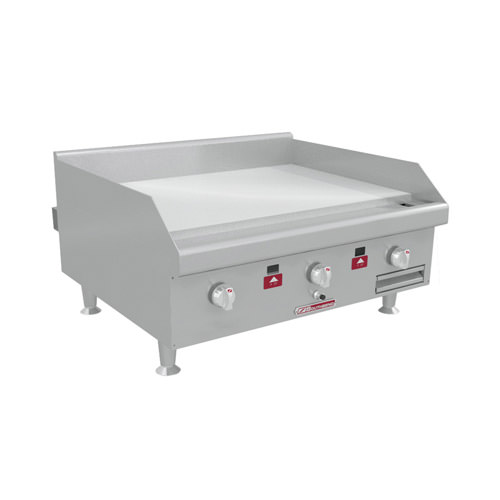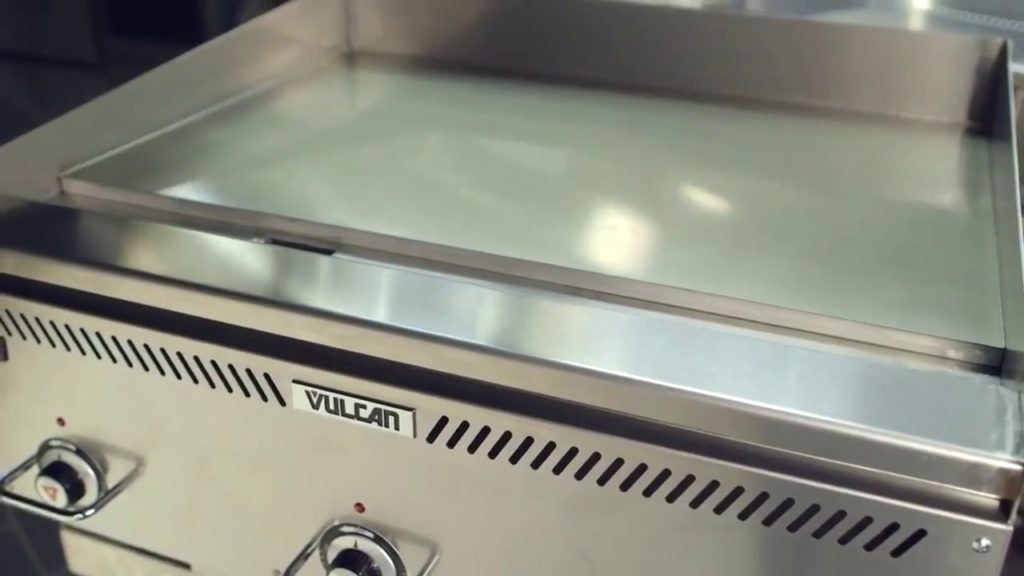04 Jan, 2019
Commercial Griddle Maintenance
Foodservice operators depend on griddles due to their versatility in the kitchen. They can be used from opening at breakfast all the way through the dinner rush. Griddles are used to crisp and brown, to sear, and to warm or toast. To ensure the commercial griddle is operating at its full potential, it is essential to follow proper cleaning procedures. There are three main plate options for griddles: steel, chrome and composite. Each has its own benefits and disadvantages, and all require a different cleaning process. Knowing the differences between all three options will help operators ensure proper performance of the griddle and help ensure the longest lifespan for their griddle.

The most common commercial griddle plate seen in the marketplace is a steel plate.
Steel is usually the most economical choice and is very durable, however, this griddle plate will emit the most heat into the kitchen and becomes less aesthetically attractive after the first use compared to other options. Steel plates tend to be the most labor-intensive to clean as they may require a brick or special detergent.
How to clean a steel griddle plate:
- At the end of service, allow griddle to cool down to 300°F-350°F and apply room temperature water.
- Use a griddle scraper to remove debris from the surface.
- Season the plate by applying oil, and use a griddle brick on the surface. Rub with the grain of the metal while the griddle is still warm.
- Another viable method is to use a griddle specified detergent on the plate surface, but be sure the detergent is thoroughly removed by flushing the cooking surface with room temperature water.
- For hard to reach places, a putty knife may also be used to remove debris.
Many times operators choose a chrome griddle plate.
This option is very aesthetically pleasing and is great for open kitchens when the cooking line is visible to end consumers. Chrome is very durable with proper use and will emit the least amount of heat into the kitchen. There is limited food flavor transfer and limited food sticking, however, this commercial griddle plate choice tends to be the most expensive compared to other plate types. Chrome plates are fairly easy to clean in comparison, but they do require special tools such as food-safe polish, a special razor bladed scraper and a Palmetto brush.
How to clean a chrome griddle plate:
- At the end of service, allow griddle to cool down to 300°F-350°F and scrape the griddle of debris with the “special razor scraper”.
- Add room temperature water and scrub with a Palmetto brush to remove remaining debris and scrape into the grease trough.
- Cover the plate with a non-abrasive, food-safe polish and wipe with a clean, dry cloth.
- Use a clean damp cloth to ensure all polish has been removed.
Some manufacturers have now also introduced plate technology that offers the fastest recovery times and 5x the heat transfer rate. This is called a composite plate. In terms of price, composite plates tend to fall between the steel and chrome options. End users will see more consistent cook times, lower energy costs and easier cleaning compared to other plate options.
How to clean a composite plate:
- At the end of service, allow griddle to cool down to 300°F-350°F.
- Scrape the griddle with a standard griddle scraper to remove all debris.
- Mix room temperature water with a mild detergent and coat the top surface of the griddle.
- Use a non-abrasive scrubby pad to clean the surface. Scrape all remaining debris into the grease trough.
- Be sure the detergent is thoroughly removed by flushing with room temperature water and then squeegee clean.

For all commercial griddle plate materials, it is important to clean the griddle cooking surface regularly with an appropriate griddle scraper during use.
To reduce the amount of time needed to clean the flat top at the end of service, wipe down the backsplash, inside and outside of the side splashes and the front of the griddle throughout service. Be sure to empty the grease drawer as needed. Routine “dressing” of the cooking surface with a light coat of oil is also recommended after each cleaning. Lastly, it is essential to refrain from using ice to cool down your griddle. This may cause thermal shock and damage the cooking surface. Always use room temperature water.
Griddle cleaning is just part of cleaning a commercial kitchen, and developing a routine maintenance schedule for all of your kitchen cooking equipment is advised. While restaurant cleaning services exist, these tips will allow your kitchen staff to handle this task in house.
